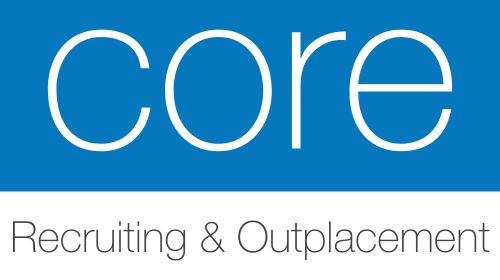
Emergency Plywood Board Up
FollowOverview
-
Founded Date April 12, 2024
-
Sectors Retail
Company Description
The 10 Most Terrifying Things About Commercial Boarding Up
Commercial Boarding Up: A Comprehensive Guide
In the business world, security is paramount. Whether dealing with a store, office complex, or storage facility, securing physical properties is vital, particularly in times of crisis. One significant preventive measure businesses can take is boarding up their properties. This post checks out the idea of commercial boarding up, including its benefits, techniques, and finest practices for implementation.
What is Commercial Boarding Up?
Commercial boarding up describes the procedure of momentarily securing windows and doors of commercial homes by covering them with panels or boards. This practice is typically made use of during emergencies such as natural disasters, vandalism, or restorations, or when a business leaves an establishment vacant for a prolonged duration. The supreme aim is to prevent unapproved access, hinder theft, and secure property versus damage.

Why is Commercial Boarding Up Necessary?
The requirement for commercial boarding up typically emerges for a number of factors:
-
Natural Disasters: Hurricanes, twisters, and extreme storms can trigger substantial damage to buildings through high winds and flying debris. Boarding up can lessen potential damage to doors and windows.
-
Vandalism and Theft: Unsecured facilities are vulnerable to break-ins and vandalism. Boarding up can hinder criminal activity and safeguard important inventory and devices.
-
Building and construction and Renovations: During repair, it might be required to limit access to certain locations, making sure security and security.
-
Long-Term Vacancies: Unoccupied structures can become targets for squatting or breaking and getting in. Boarding up offers protection until the property can be protected or repurposed.
Approaches of Commercial Boarding Up
There are a number of methods to board up a commercial property effectively. These can differ based upon the size and structure of the building, the level of security needed, and the period for which the boards need to stay in location.
Typical Boarding Materials
| Material | Features | Finest Used For |
|---|---|---|
| Plywood | Strong and easily available | Short-term boarding, high danger |
| OSB (Oriented Strand Board) | Cost-effective, good strength | Short to medium-term boarding |
| Metal Sheets | Extremely resilient, fireproof | High-security requirements, long-lasting |
| Lexan or Polycarbonate | Lightweight, impact-resistant | High-security glass replacement |
Installation Techniques
-
Screw and Anchor: Secure the boards to the window or door frames utilizing screws that penetrate deeply into the wall for stability.
-
Brackets: Use brackets to reinforce the boards, especially for bigger openings.
-
Secure with Bolts: In high-risk locations, bolts can be used for added security, ensuring that boards can not be easily eliminated.
-
Frame Construction: For prolonged exposure, building a frame to hold the boards rather of connecting directly to the structure can be advantageous.
Temporary vs. Permanent Boarding Up
While a lot of boarding up practices are meant to be temporary, there are cases where permanent or semi-permanent solutions may be necessary. It is vital to evaluate the private needs of the property and function of the boarding up.
Best Practices for Boarding Up
To ensure the efficiency of commercial boarding up, specific finest practices ought to be followed:
-
Assess vulnerabilities: Identify all points of entry and examine the weaknesses that might be made use of during a crisis.
-
Use the best products: Choose the proper boarding materials based on the level of risk and duration of boarding up.
-
Professional setup: For larger or heavily affected properties, engaging professional services can ensure superior security and compliance with local regulations.
-
Keep secure gain access to points: Even while boarding up, make sure that you have secure access points for emergency services, if necessary.
-
Regular assessments: Periodically inspect the boarding to guarantee it remains secure and intact, specifically after storms or high winds.
FAQs About Commercial Boarding Up
What is the ideal thickness for plywood boarding?
A thickness of at least 1/2 inch is suggested for plywood boarding up to ensure it can stand up to high winds and impact.
How can I remove boards after setup?
Usually, unscrewing the boards or removing bolts must enable simple removal. Nevertheless, it is crucial to have the proper tools on hand.
Can I board up my business myself?
Yes, many services opt to board up themselves; nevertheless, it is often suggested to employ specialists for bigger residential or commercial properties or in high-risk circumstances.
How long can boards keep up?
The time boards can remain in location depends upon different elements, including local regulations, the security needed, and physical conditions affecting the property.
How do I safeguard my business from possible vandalism when it is closed?
In addition to boarding up, consider installing security cams, lighting, and alarm to boost the total security of your property when closed.
Commercial boarding up is a tactical method to securing organizations from numerous possible threats, including natural catastrophes and criminal activity. By understanding numerous techniques, materials, and finest practices, entrepreneur can enhance the security of their homes, reduce damage, and guarantee the security of their possessions. While the procedure may appear uncomplicated, proactively participating in detailed preparation and assessment may yield the finest lead to safeguarding a business’s most crucial investments.

